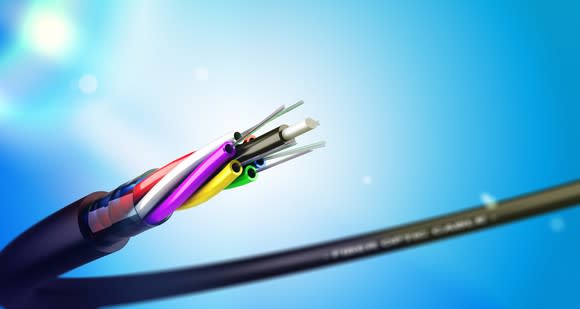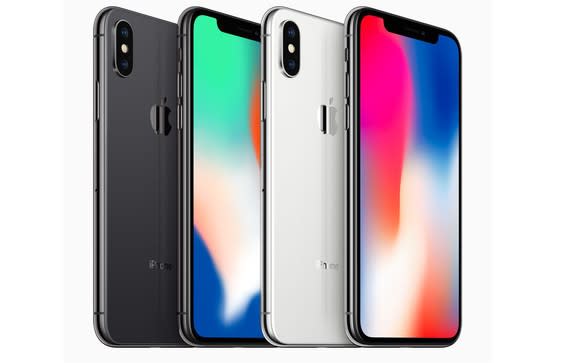Where Will Finisar Corporation Be in Five Years?
Finisar (NASDAQ: FNSR) has been a tough stock to own over the past year. Shares have fallen almost 30% on soft demand for its fiber optic components in China, exacerbated by a loss of its market share to Lumentum (NASDAQ: LITE) at its big datacom customer Huawei.
In a previous article, I pointed out that Finisar would likely face even tougher headwinds ahead due to the cyclical softness of the Chinese fiber market and rising expenses related to the construction of its new plant in Wuxi, China. But today I'll focus on the more positive catalysts which could lift the stock over the next five years.

Image source: Getty Images.
The rebound in the Chinese market
During last quarter's conference call, Finisar CEO Jerry Rawls stated that Chinese OEMs didn't see demand rebounding in 2018, but that "there would be a lot of optics procured in 2019."
That optimism reflects long-term expectations across the industry. For example, research firm The Insight Partners estimates that the global optical fiber market will still grow at a CAGR (compound annual growth rate) of 11.7% between 2016 and 2025 to $27.9 billion.
China is the industry's largest market, according to Research and Markets, accounting for over half of all optical fiber orders worldwide. Spending across the market is in a temporary lull, but should accelerate considerably with the rollout of 5G networks over the next few years.
Finisar fumbled earlier this year when Huawei disqualified its 100G CFP2 products due to firmware problems, and lost some orders to Oclaro (NASDAQ: OCLR) and Lumentum. But its products were requalified over the summer. Therefore, as the Chinese market recovers, so will Finisar's revenue. That's why analysts expect its sales to fall 6% this year, but rebound 11% next year.
Growing demand for VSCELs
Finisar recently started shipping VCSELs (vertical-cavity surface-emitting lasers) for 3D sensing in mobile devices and cars. Apple (NASDAQ: AAPL) notably uses VSCELs in the iPhone X's TrueDepth camera and the AirPods' proximity-sensing capabilities.

Apple's iPhone X. Image source: Apple.
Apple recently awarded Finisar $390 million to help it "exponentially increase its R&D spending and high-volume production" of VSCELs. Finisar plans to do this by expanding its new facility in Sherman, Texas, while lowering production costs with its 6" wafers.
Apple stated that in the fourth quarter of 2017 it will buy "10 times more VSCEL wafers than were previously manufactured worldwide over a similar time period," and that all of the wafers would come from Finisar's Sherman plant.
Since Apple is a trend-setter in the mobile world, it's highly likely that other smartphone makers will also order VSCELs for their new devices and accessories. Orders for VSCELs will also likely be lifted by the growth of the connected and driverless car markets.
Zion Market Research expects the global VSCEL market to grow at a CAGR of 21.3% between 2016 and 2021, hitting a market value of $2.4 billion by the final year. That market won't be big enough to completely offset Finisar's dependence on the telecom industry, but it can offset some of its cyclical softness across the fiber market.
Market consolidation
The fragmented fiber industry is also ripe for consolidation. Back in March, Finisar's convertible debt offering fueled speculation that the company was gearing up for a big acquisition.
At the time, Jefferies analyst James Kisner believed that Oclaro was a natural target, producing significant sales and R&D synergies while improving its presence and capabilities across the long-haul optics and discretes market. It would also make sense to buy a smaller company like Oclaro -- which remains down over 20% for the year -- before the fiber market recovers.
With a market cap of $2.5 billion and a forward P/E of 15, Finisar could also be a lucrative target for expanding companies like Broadcom and Corning. Therefore, Finisar could either become much larger over the next five years, or be absorbed by a bigger company.
The key takeaway
It's often said that the night is darkest before the dawn (which isn't technically true, because the night is usually the darkest at midnight). Finisar's stock hasn't hit midnight yet, since fiscal 2018 could be another tough year -- but the company still has bright long-term prospects.
More From The Motley Fool
Leo Sun owns shares of Corning. The Motley Fool owns shares of and recommends Apple. The Motley Fool has the following options: long January 2020 $150 calls on Apple and short January 2020 $155 calls on Apple. The Motley Fool recommends Broadcom Ltd and Corning. The Motley Fool has a disclosure policy.

 Yahoo Finance
Yahoo Finance 